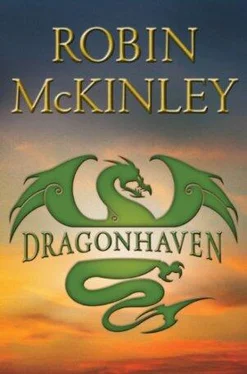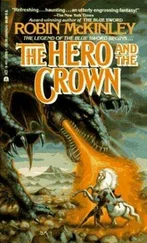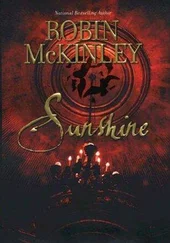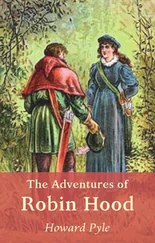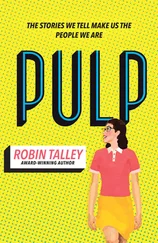Maybe if dragons had eaten more people when they had the chance humans wouldn't have been so offhand. (Although if they had they might have been made extinct before anybody thought to preserve them.) You're looking to design the real, true, only dragon, and what more can you want than big and flying and breathing fire? No pouch nonsense is what you want. Hence the attraction of all the silly little lizards like russo and chinensis.
Because, I hear you say, not only is there the pouch problem, but kangaroos and koalas are mammals. True. But nobody ever told reptiles they couldn't evolve a pouch to carry their babies in, did they? You've heard the phrase "parallel evolution"? And mammals and reptiles are cousins anyway, if you go back far enough, like maybe 250 million years or so, which gives you a lot of room to mutate in. The biology of dragons — and from here on let's get it straight that when I say dragon, I mean our one and only real dragon, Draco australiensis — is still pretty much one big blank space in the biology books.
And dragon corpses disintegrate really fast — so there goes that standard research route — including the bones — which is something to do with the fire-stomach too, or the body chemistry that supports the fire-stomach, or maybe the bones are built out of something we don't know about that weighs less than the rest of the planet's bones, which is why dragons can fly. Hitch over one of those rows of the periodic table, there's a missing dragon bone element to get in somewhere. One of the results is that no natural history museum in the world has a dragon skeleton on display, which in a weird way means that a lot of people assume they don't really exist. And there are some unhappy paleontologists and animal osteologists who would like to specialize in dragons and can't.
They think that baby dragons are born with some kind of embery gum or mucilage in their tiny fetal fire-stomachs — their igniventatores. They think that Mom somehow shoves 'em out — she usually has several at a go — and lights 'em up, that that's when they're born, that maybe the fire-lighting business is where the marsupial business started, that you have to get the fire lit while the baby is still kind of an embryo, for some reason or other, so maybe it makes sense to transfer them to a different holding container while you're at it. So she gets 'em lit and into her pouch where they stay for the next year or so.
So a long time ago the species must have figured out it couldn't go the several-hundred-eggs tortoise route if it wanted to work on this great new fire-breathing racket, so it went for pouch incubators instead. But the lab coats still haven't really decided whether dragons are reptiles. Maybe they're mammals. Or something else. I like the something else idea myself, what else has an igniventator ? But apparently having some big new thing as high up in the hierarchy as the division between reptiles and mammals upsets everybody too much. Science under Threat by Unclassifiable Critter: film at eleven. I keep telling you lab coats are drones. Although I sometimes think the label guys went for reptiles only because Draco was already stuck on a lot of lizards, and it would be just too stupid to have something that finally obviously is a dragon called Thingamajiggium. Which maybe means lab coats have some imagination after all.
There's other weird stuff, like their scales are made out of something that is a lot more like mutant hair than like adapted skin. (They seem to shed more here at Smokehill than anywhere else. Something to do with the weather, presumably. But we sell shed dragon scales in the gift shop — as many as the Rangers can pack in — and they go really well. Have I mentioned recently that we're always desperate for money?) And they fly, which makes them the only non-bird that can take off and land and flap and soar like a bird, with none of that cheating stuff that "flying" squirrels or "flying" fish do. So maybe they're birds. Although the third pair of limbs is still problematic.
All of this bothers a lot of the fruit loops too. Dragons are supposed to be reptiles. Everybody knows that. All the fake dragons are real reptiles. They also behave in nice lower-order ways that scientists who want to study them like. They don't disappear. You can watch 'em having and raising their babies. Their corpses rot the way corpses are supposed to rot, and natural history museums can have as many skeletons as they like. That kind of thing. It's funny what everybody knows.
But the trouble with dragon public relations is pretty well permanent. First, they're too marsupialy and not lizardy enough, and then they're hard to find, to gawk at or to study (which is only a snobby form of gawking really), and then they might even be (do-do-do-do, do-do-do-do) intelligent. Why didn't we know about them till about two hundred and fifty years ago? Something that size? Even if they did hang out in the middle of a big empty continent? It's not like no one ever went there. The Europeans thought it was just another quaint aboriginal myth for a long time. I guess sheep are like chocolate or heroin to dragons, they just couldn't help themselves when the ranchers moved in. But they lost the war with the sheep ranchers because they never really fought it. The ranchers and the mercenaries and big game hunters they hired or pitched in with — and the poachers — killed a lot of dragons, and the rest of them pretty much disappeared. Again.
But there was about half a century of the australiensis golden age when everybody was fascinated by them, and you could study them all right, so long as the poachers didn't get there first. Well, you still didn't see them get born. But you could see them flying, for example. Something the size of a dragon is pretty damn visible, flying. And there are lots and lots of records of all those sober scientists streaming out to Australia to see for themselves. I was really jealous of the guys who could write about seeing dragons flying nearby, the hot smell of them — like fire but not like fire — the way their underparts tend to be paler and mottled — but you can't see a lot of their bellies because of the way they tuck their tails back under their bodies, like a dog tucking its tail between its legs. Birds use their tails as rudders. Dragons have some other system . . . but that's only one of a thousand things we don't know about dragons. We started killing them too soon.
When it was too late some of the politer scientists went round to the aborigines and said, Hey, can we talk to you about your dragon stories? It was those stories that first told the rest of us that australiensis had pouches. Maybe by then we were looking for a reason not to like them, since we were busy making them extinct. The really interesting thing about all the old aboriginal tales though is that there isn't a single one about a dragon eating a human. Oh well those are just tales, said the guys with the guns. And it's true that a few ranchers got fried in the non-war, but a rattlesnake won't bite you unless you worry it, and the ranchers were going after the dragons — there was no live-and-let-live policy or acceptable sheep loss rate.
I'd never seen a dragon flying — not up close. And I live here. And five million acres isn't big enough to hide (maybe) two hundred flying dragons. So, I hear you say, maybe our figures are wrong? Maybe we don't have two hundred dragons? Then what's eating the deer, the sheep, and the bison? We can count our bears and our cougars and our bobcats and our coyotes and our wolves well enough, and they aren't doing it by themselves. And our Rangers really do cover most of the park slowly, over a period of years. They said there were quite a few dragons out there, and Dad and I believed them.
Читать дальше
